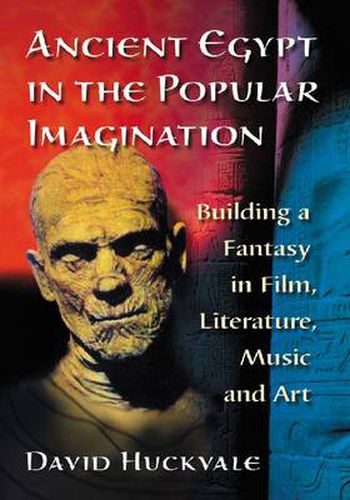Readings Newsletter
Become a Readings Member to make your shopping experience even easier.
Sign in or sign up for free!
You’re not far away from qualifying for FREE standard shipping within Australia
You’ve qualified for FREE standard shipping within Australia
The cart is loading…






This title is printed to order. This book may have been self-published. If so, we cannot guarantee the quality of the content. In the main most books will have gone through the editing process however some may not. We therefore suggest that you be aware of this before ordering this book. If in doubt check either the author or publisher’s details as we are unable to accept any returns unless they are faulty. Please contact us if you have any questions.
Ancient Egypt has long been a source of fascination in Western popular culture. Movies such as 1953’s The Mummy, Biblical epics like The Ten Commandments (1923, 1956), and pharaonic films like Cleopatra (1934, 1963) and The Egyptian (1954) have all recreated the glamour and allure of Egyptian art and civilization for Western audiences. This work traces how these and other films were inspired by writers like Bram Stoker and Sir Arthur Conan Doyle and by the art of Victorian painters. Similarly, it shows how the soundtracks to such films belong to a Romantic musical tradition stretching back beyond Verdi and Mozart. Exploring these artistic endeavors addresses the question of whether the fantasy of ancient Egypt represents racist misunderstandings of a far more significant reality, or a way for Western culture to understand itself.
$9.00 standard shipping within Australia
FREE standard shipping within Australia for orders over $100.00
Express & International shipping calculated at checkout
Stock availability can be subject to change without notice. We recommend calling the shop or contacting our online team to check availability of low stock items. Please see our Shopping Online page for more details.
This title is printed to order. This book may have been self-published. If so, we cannot guarantee the quality of the content. In the main most books will have gone through the editing process however some may not. We therefore suggest that you be aware of this before ordering this book. If in doubt check either the author or publisher’s details as we are unable to accept any returns unless they are faulty. Please contact us if you have any questions.
Ancient Egypt has long been a source of fascination in Western popular culture. Movies such as 1953’s The Mummy, Biblical epics like The Ten Commandments (1923, 1956), and pharaonic films like Cleopatra (1934, 1963) and The Egyptian (1954) have all recreated the glamour and allure of Egyptian art and civilization for Western audiences. This work traces how these and other films were inspired by writers like Bram Stoker and Sir Arthur Conan Doyle and by the art of Victorian painters. Similarly, it shows how the soundtracks to such films belong to a Romantic musical tradition stretching back beyond Verdi and Mozart. Exploring these artistic endeavors addresses the question of whether the fantasy of ancient Egypt represents racist misunderstandings of a far more significant reality, or a way for Western culture to understand itself.